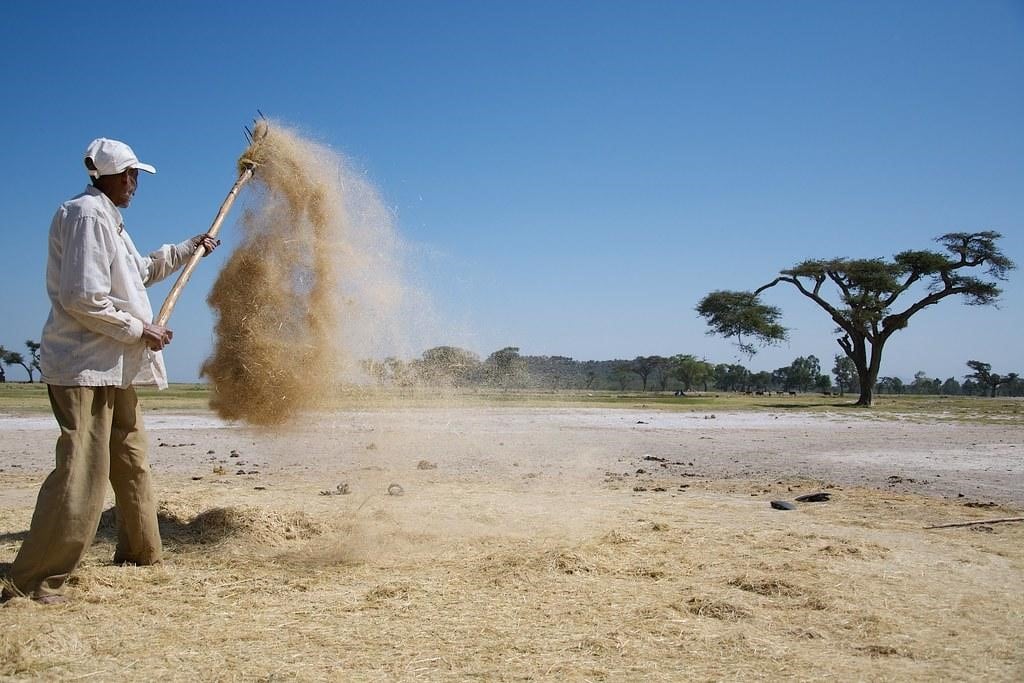By Fetien Abay and Tareke Berhe
The global food system is currently dominated by just three staple crops: maize, wheat, and rice. Food and nutrition security requires a more resilient and diversified food system. Enter teff, a small cereal that today accounts for ⅔ of protein consumed in Ethiopia, yet is relatively unknown as a food crop elsewhere.
Teff is naturally highly nutritious without fortification and resists stress, both weather and pest. It’s also good for people with celiac disease, otherwise known as gluten intolerance. Naturally gluten-free, teff grain can substitute for wheat flour and other cereals for making a wide variety of foods, anything from bread and pasta to waffles and pizza crusts.
Teff’s Moment in the Sun
The rapid rise in obesity rates around the world has led to increased awareness of diet and lifestyle, including gluten intolerance. Global demand for teff grain is expanding by 7% to 10% per year. In the US alone, teff grain sales have risen steeply, by approximately 58% within the past few years, and are expected to grow by a further 12.3% from 2020 to 2027. The California Teff Commission has concluded that teff is California’s next lucrative agricultural export (www.californiateffcommission.org). Scientists at University of California-Davis are also testing teff grass as a forage crop.
However, global production has been constrained by limited research into breeding, agronomy, and storage. We’re now hoping to change this through our Teff Research and Development Project. The overall objective of our project is to develop climate-resilient and high-yielding teff varieties through crossbreeding and selection. We’re developing teff crop varieties and production technologies designed initially for the Sacramento Valley of California, but with a further objective of ensuring that these same varieties and technologies can be used in other parts of the United States, Ethiopia, and elsewhere in the world where one will find similar environmental conditions. We’re also studying pest resistance and shelf life.
Out of its Element
Teff is a high elevation (1,200 to 2,200 meters above sea level), short-day (12 hours of daylight), and cool weather (15 to 26 degrees Celsius) cereal indigenous to the highlands of Northern Ethiopia and Southern Eritrea. Therefore, it’s a huge challenge to grow teff successfully and economically in the Sacramento Valley, which has a low average altitude (90 to 180 meters), long days (13 to 15 hours of sunlight), and higher temperatures (ranging above 32 degrees Celsius in the summer). Our innovative study will build on previous work undertaken by co-author Tareke Berhe. We’re also planning collaborations with UC Davis researchers and neighboring farmers.
There are other challenges to overcome.
Teff has weak stems, and is thus susceptible to lodging. That in turn hinders the use of mechanized options in teff production. We will breed for short, sturdy, high-yielding varieties like those that have been so successful for wheat and rice. Developing a new variety usually takes 8 to 10 years, but by growing two to three generations per year in the greenhouse as well as the field, we can shorten that turnaround to one-half or one-third of the normal time, provided that research funds are available.
Fetien Abay is a crop science professor at Mekelle University in Ethiopia. Tareke Berhe is an agronomist, plant breeder, and expert on Ethiopian teff.
Photograph credit: A farm winnows teff in Bochessa, Ethiopia. Ryan Kilpatrick, Creative Commons.




